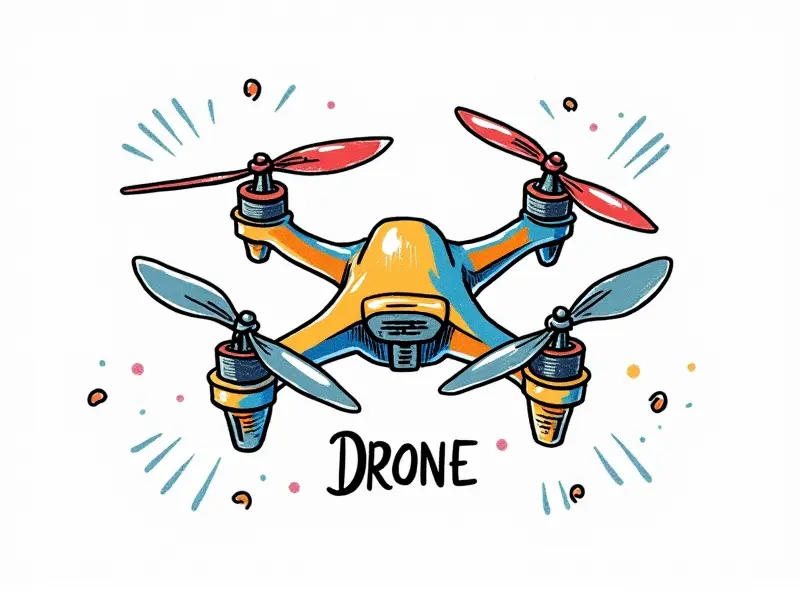Best FPV drone setup

Ultimate Guide to Building Your First FPV Drone
Welcome to the world of FPV (First Person View) drones! Whether you're a beginner or an experienced pilot looking to upgrade your setup, this guide will walk you through everything you need to know about building and optimizing your FPV drone. From choosing the right components to setting up your system for optimal performance, we've got you covered.
Top Components for Your FPV Drone Setup
The heart of any successful FPV drone is its components. Here’s a breakdown of what you need:
- Flying Platform: Choose between quadcopters or hexacopters based on your needs and budget.
- Flight Controller: Opt for high-quality controllers like the Betaflight or Cleanflight firmware to ensure stability and control.
- Battery: Lithium-Polymer (LiPo) batteries are essential for providing consistent power during flights.
- Motor & Propeller: High-performance motors paired with propellers that match the motor’s RPM will give you better flight performance.
Essential Gear for FPV Drone Pilots
To fully enjoy your FPV drone experience, you’ll need more than just a flying platform. Here are some must-have items:
- Video Transmitter (VTX): A high-quality VTX like the Runcam Split or TBS Unify ensures clear and reliable video transmission.
- Receiver: Select a receiver that can handle multiple channels for redundancy and reliability.
- Goggles: High-resolution goggles such as FatShark or Freeway provide an immersive FPV experience.
Must-Have Accessories for FPV Racing Drones
If you’re into FPV racing, there are additional accessories that can enhance your performance and safety:
- Racing Frame: Frames designed specifically for racing offer superior aerodynamics.
- Battery Management System (BMS): A BMS helps monitor and protect your batteries, extending their lifespan.
- Failsafe Module: This device ensures that your drone returns home safely if the signal is lost.
Optimal Camera Settings for FPV Flight
The camera is crucial for an immersive and clear FPV experience. Here’s how to set it up:
- Resolution: Opt for a resolution that balances quality with data rate, such as 720p or 1080p.
- Framerate: Higher frame rates like 60fps provide smoother video but increase the data load on your VTX.
- Bitrate: Adjust bitrate to ensure a balance between quality and transmission efficiency.
Choosing the Right Antenna for FPV
The antenna plays a critical role in signal strength and range. Consider these options:
- Diversity Antennas: These antennas offer better reception by using multiple elements to capture signals.
- Belt Antenna: Ideal for long-range flights, providing superior gain and stability.
Step-by-Step FPV Drone Build Tutorial
Building your own FPV drone can be a rewarding experience. Follow these steps to get started:
- Select Components: Choose the right frame, flight controller, motors, and other critical parts.
- Assemble Frame: Mount the flight controller and ESCs securely within the frame.
- Install Motors & Propellers: Attach your chosen motors to the arms of the frame and install propellers.
- Connect Electronics: Wire up the battery, VTX, receiver, and other components according to your flight controller’s setup guide.
- Tune Flight Controller: Calibrate sensors and set PID values for optimal stability.
Budget-Friendly FPV Drone Kit Recommendations
If you're looking to start with a budget-friendly kit, here are some options:
- Runcam Mini VTX + Runcam Split VTX Combo: Great for beginners due to their ease of use and affordability.
- TBS Discovery Race 250: A complete racing kit with high-quality components at a reasonable price point.
Best Practices for Setting Up an FPV System
To ensure your FPV system performs optimally, follow these best practices:
- Test Components Individually: Before assembling the drone, test each component to identify any issues.
- Optimize Signal Range: Experiment with different antenna configurations to maximize signal coverage.
- Calibrate Goggles: Ensure your goggles are properly calibrated for best video quality and latency.
DIY FPV Drone Kit: What You Need
If you prefer a DIY approach, here’s what you should have on hand:
- Frame & Motors: Select lightweight yet sturdy materials for your frame and high-performance motors.
- Battery Charger: A reliable charger is essential for maintaining battery health.
- Soldering Iron: Necessary for connecting wires and components securely.
Quick Start Guide to FPV Racing Drones
Ready to hit the race track? Here’s a quick guide to get you started:
- Familiarize Yourself with Rules: Understand the rules and regulations of your local racing events.
- Practice Flight Skills: Spend time practicing basic maneuvers before attempting races.
- Join a Community: Engage with other FPV pilots to learn tips, tricks, and safety measures.
Conclusion
Building your first FPV drone can be an exciting journey filled with learning and discovery. By choosing the right components, setting up your system correctly, and following best practices, you’ll be well on your way to enjoying a thrilling FPV experience. Whether you’re building from scratch or using a kit, there’s always something new to explore in this dynamic hobby.

